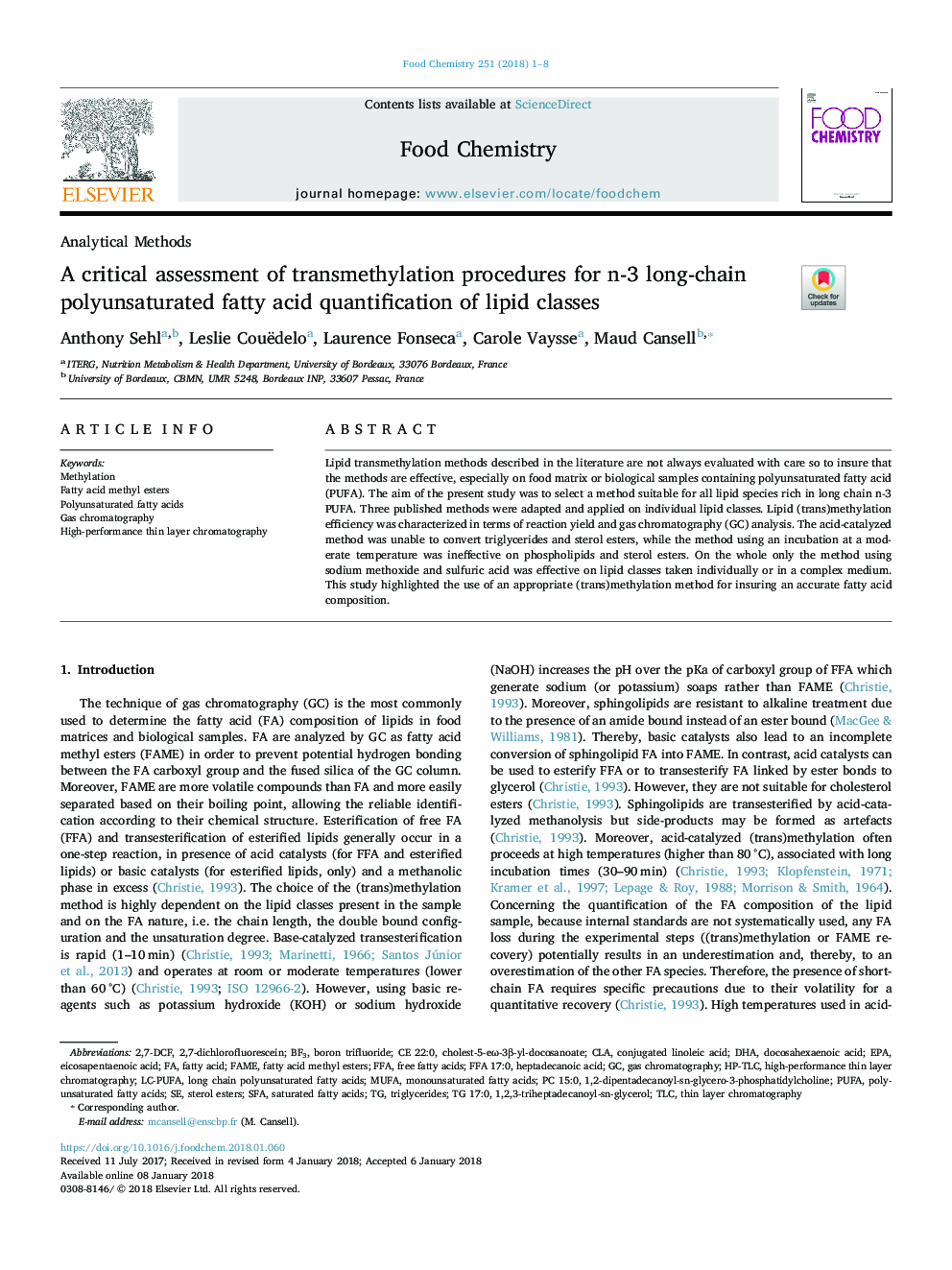| Article ID | Journal | Published Year | Pages | File Type |
|---|---|---|---|---|
| 7585688 | Food Chemistry | 2018 | 8 Pages |
Abstract
Lipid transmethylation methods described in the literature are not always evaluated with care so to insure that the methods are effective, especially on food matrix or biological samples containing polyunsaturated fatty acid (PUFA). The aim of the present study was to select a method suitable for all lipid species rich in long chain n-3 PUFA. Three published methods were adapted and applied on individual lipid classes. Lipid (trans)methylation efficiency was characterized in terms of reaction yield and gas chromatography (GC) analysis. The acid-catalyzed method was unable to convert triglycerides and sterol esters, while the method using an incubation at a moderate temperature was ineffective on phospholipids and sterol esters. On the whole only the method using sodium methoxide and sulfuric acid was effective on lipid classes taken individually or in a complex medium. This study highlighted the use of an appropriate (trans)methylation method for insuring an accurate fatty acid composition.
Keywords
EPABF3HP-TLC2,7-dichlorofluoresceinLC-PUFASFAMUFACLATLCFFAsterol estersEicosapentaenoic aciddocosahexaenoic acidconjugated linoleic acidHeptadecanoic acidFatty acidPolyunsaturated fatty acidsPUFAFree fatty acidssaturated fatty acidsLong chain polyunsaturated fatty acidsmonounsaturated fatty acidsBoron trifluorideTriglyceridesDHAFAME یا fatty acid methyl esters fatty acid methyl estersMethylationthin layer chromatographyhigh-performance thin layer chromatographyGas chromatography
Related Topics
Physical Sciences and Engineering
Chemistry
Analytical Chemistry
Authors
Anthony Sehl, Leslie Couëdelo, Laurence Fonseca, Carole Vaysse, Maud Cansell,
